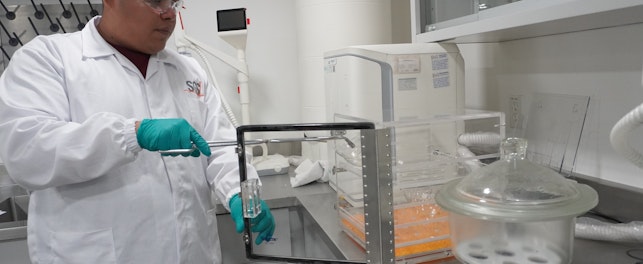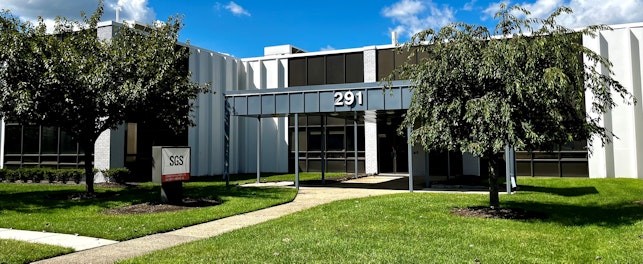The National Ski Areas Association (NSAA) reports that 35 skiers and snowboarders lost their lives during the 2023/24 season in the US, with an additional 49 suffering catastrophic injuries.1 As winter sports continue to grow in popularity, these figures underscore the importance of effective, specialized personal protective equipment (PPE). Ensuring safety in such high-risk activities requires both consumers and manufacturers to take proactive measures.
For many people, winter signals a retreat indoors, but for a growing number of enthusiasts, it marks the return to the slopes and ice rinks. While thrilling and adrenaline-inducing, winter sports like skiing, snowboarding and ice hockey carry inherent risks. Beyond natural hazards such as avalanches, participants face the possibility of collisions with trees, rocks or other individuals on the slopes, potentially leading to twisted joints, broken bones or cranial injuries.
In ice hockey, the danger takes on a different form – players often collide with one another, risk concussions from impacts with the ice, or face injuries from being struck by the puck. While these activities offer excitement and challenge, they also highlight the critical need for proper safety measures and reliable PPE to minimize the risks.
The demand for winter sports equipment is climbing steadily. In 2023, the global market for ski gear and equipment was valued at approximately USD 15.9 billion, with projections indicating a compound annual growth rate (CAGR) of 5.4% from 2024 to 2030.2 Similarly, the global market for ice hockey equipment was estimated at USD 2.06 billion in 2023 and is forecasted to grow at a CAGR of 6.2% over the same period.3
PPE is a rapidly expanding segment in both markets. Designed to mitigate the severity of accidents in winter and other action sports, PPE must meet stringent safety and performance requirements to effectively protect users. To ensure this, various safety standards have been established to guide the design, testing and manufacturing of these products. These standards are often product- and market-specific.
| European Union | United Kingdom | United States/Canada | |
| Testing | EN 1077:2007/BS EN 1077:2007 Helmets for alpine skiers and snowboarders EN1621-1:2012+PPE-R/09.005 Impact protectors for use in motorcycling and skiing limb joint impact protector EN1621-2:2014+PPE-R/09.005 Impact protectors for use in motorcycling and skiing back protectors EN ISO 18527-1-2022/ ISO 18527-1:2021 Eye and face protection for sports use – Part 1: Requirements for downhill skiing and snowboarding goggles EN 13178:2000 Personal eye-protection – eye protectors for snowmobile users EN 13089:2011+A3:2023 Mountaineering equipment – ice tools – safety requirements and test methods EN 569:2007 Mountaineering equipment – pitons – safety requirements and test methods EN 893:2018 Mountaineering equipment – crampons – safety requirements and test methods EN 959:2018 Mountaineering equipment – rock anchors – safety requirements and test EN 12270:2013 Mountaineering equipment – chocks – safety requirements and test methods EN 12276:2013 Mountaineering equipment – frictional anchors – safety requirements and test methods | ASTM F2040-18 Standard specification for helmets used for recreational snow sports ASTM F1045-22 Standard performance specification for ice hockey helmets CSA Z262.1-15(R2019) Ice hockey helmets (Canada) ASTM F1849-23 Standard specification for helmets used in ice speed skating (long track) and short track speed ice skating (not to include hockey) ASTM F513-22 Standard specification for eye and face protective equipment for hockey players CSA Z262.2-15(R2019) Face protectors for use in ice hockey (Canada) | |
| Certification | CE conformity assessment | UKCA conformity assessment | Currently not required |
CE/UKCA marking
Manufacturers operating in the EU, European Economic Area (EEA) and UK markets are responsible for ensuring their products meet relevant safety, health, performance and environmental protection requirements. All PPE, including sports-specific PPE, is covered by Regulation (EU) 2016/425 and its UK counterpart, Regulation 2016/425, collectively referred to as the PPE Regulation. Conformity with these standards is demonstrated by applying the CE marking (for EU and EEA markets) and/or the UKCA marking (for UK markets).
Conformity assessment
The PPE Regulation categorizes PPE into three groups based on the severity of the risks they are designed to mitigate:
- Category I: Protection against minimal risks, such as superficial mechanical injuries
- Category II: Protection against moderate risks not covered by categories I or III
- Category III: Protection against risks with severe consequences, such as extreme low temperatures or life-threatening hazards
In winter sports, examples of PPE classifications include:
- Category I: Ski and snowboarding goggles
- Category II: Helmets and body protectors
Category I products are subject only to internal product controls for conformity assessment. Manufacturers must establish the required technical documentation, draw up an EU/UKCA declaration of conformity, and affix the CE and/or UKCA mark. Third-party assessment is not required if the product complies with the relevant standard.
Category II products require the involvement of a Notified Body. After the manufacturer has applied for EU/UKCA type-examination, prepared the necessary technical documentation, and drafted the EU/UKCA declaration of conformity, the Notified Body must assess the technical documentation and conduct appropriate tests and examinations. Once satisfied, the Notified Body issues the EU/UKCA type-examination certificate, valid for five years. The manufacturer can then affix the CE and/or UKCA mark and place the product on the market.
Unlike the EU, there is no compulsory requirement for testing or certification of most sports PPE in the US.
Failure to conform to relevant standards can put the wearer at risk and may lead to costly product recalls. For instance, in 2016, Head recalled 440 ski helmets in North America after discovering they did not meet the impact requirements of safety standards, posing a risk of head injury.4 More recently, the Droyd multi-purpose helmet was recalled in the US after it was found not to meet mandatory requirements for positional stability, retention system, impact, labeling and certification.5 Similarly, the Gasaciods children’s multi-purpose helmet was recalled for violating the CPSC federal safety regulations for bicycle helmets.6
SGS solution
We provide a comprehensive range of safety and quality assurance services for all forms of PPE, including those designed for winter sports. With expertise in global compliance, we assist manufacturers in ensuring their products meet the regulatory requirements across multiple markets, including the US, EU, UK, Australia, New Zealand and Brazil.
Our facilities in Finland (Notified Body 0598) and the UK (Approved Body 0120) offer type-approval examinations in line with PPE Regulation 2016/425. As a one-stop solution provider, we can conduct both CE and UKCA certifications simultaneously, streamlining the process and ensuring compliance with key safety standards.
Our services help manufacturers navigate complex regulatory landscapes, ensuring their PPE meets the highest safety standards for global markets.
Learn more about our comprehensive PPE testing and certification services.
Enjoyed this article?
Find more news and updates in our Consumer Compact newsletter >
Delivered direct to your inbox
Subscribe to Consumer Compact >
References
1 2023/24 U.S. Ski Season Fatality Fact Sheet & 2023/24 U.S. Ski Season Catastrophic Injury Fact Sheet
2 Ski Equipment & Gear Market Size And Share Report, 2030
3 Ice Hockey Equipment Market Size And Share Report, 2030
© SGS Société Générale de Surveillance SA.





